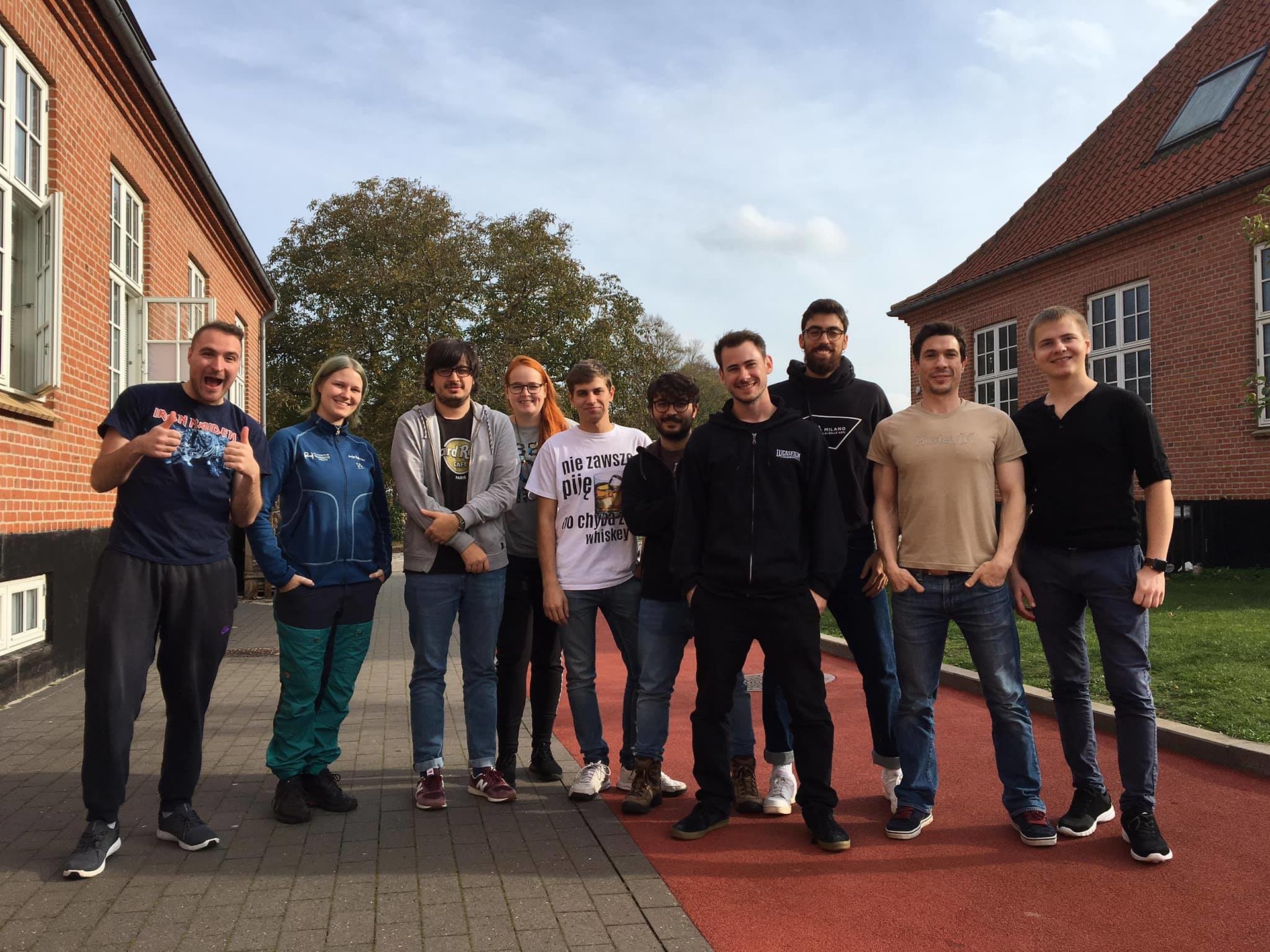Last week I finished the VFX generalist professional course at the animation workshop, a cosy international school in Viborg, a small town in the north of Denmark. The school is focused on animation, graphic storytelling and computer graphics studies and has a wonderful environment with students, teachers and staff.
The professional courses that the school offers are focused on learning in order to get a job in the industry, the teachers are professionals that come to the school to teach us their speciality from all around the world. This year we had really friendly and over the top teachers: Björn Gromoll is the course headmaster and he showed us the basics of VFX pipeline, Giancarlo Gallinoro former course student tracking and matchmoving, Andrew Hodgson enlightened us with hard surface modeling, Thom Jones the texturing wizard, Marc Tingle swiss army knife of lookdev, lighting and layout, Hugo Guerra master of compositing, Geoffroi Ridel struggled with my (zero) photoshop skills for digital matte painting (sorry) and Leigh Russell who is the school’s CG boss was supervising the final week. Thanks for teaching us! 😸

Since the course is planned for us to be able to get a job, after the first month we jumped right into working on our own project to have something as demo reel. We were provided a bunch of plates and we did some concept “art” and story building to choose what we wanted to do in the next 12 weeks. We had to propose 3 different levels based on complexity and then see what we could do (spoiler: I just did the first level, it was more complicated than expected ツ).
When the tracking was done we started modeling the assets we needed so I started with an old Volkswagen Golf since it was going to be my main hero asset. I realized it was going to be more difficult than expected and I spent the whole two modeling weeks doing it (by the way, I worked around 14 hours a day average on this course, so yeah, intensive) and then I needed to take some time to finish the rest of the assets in the texturing week.
So texturing week was a little bit stressful too because I was still modeling, but I could do it a bit better, so I finished almost every asset when we started look development. I liked both texturing and lookdev a lot when I was using procedural techniques, it is the best way to work once and use it many times, and since I have computer science background I think that is the best way to work, so I loved Substance Designer the most, and also Painter and Arnold.
Lighting was probably the easiest part in my project, we used IBL: HDRs captured on set to get an accurate representation of light in the scene, and then just match the CG to the plate. I also added some fake lights to make it more interesting. Then we rendered it for comp. No more CG (yeah, I needed to fix a few things and re-render).
After that I did some photo bashing as matte painting to have something nicer as background. The final step in the pipeline before making the breakdown and editing the presentation was digital composition, and Nuke became one of my favourite pieces of software ever, so useful and hackable… We did some basic grading and matching the CG to the plate, and then apply some lens imperfections and deal with lens distortion.
And this is my personal experience in the VFX course @ TAW, and overall I’m really happy about the course and my personal project. Thanks again to my classmates for helping me out, and the course staff for organizing this course this good. Cheers!
PD: This is my first blog post on my brand new vfx blog. This will be the place for me to write about the vfx world from now on, so if you are interested visit it from time to time, or follow me on twitter or linkedin where I’ll be posting updates :)
